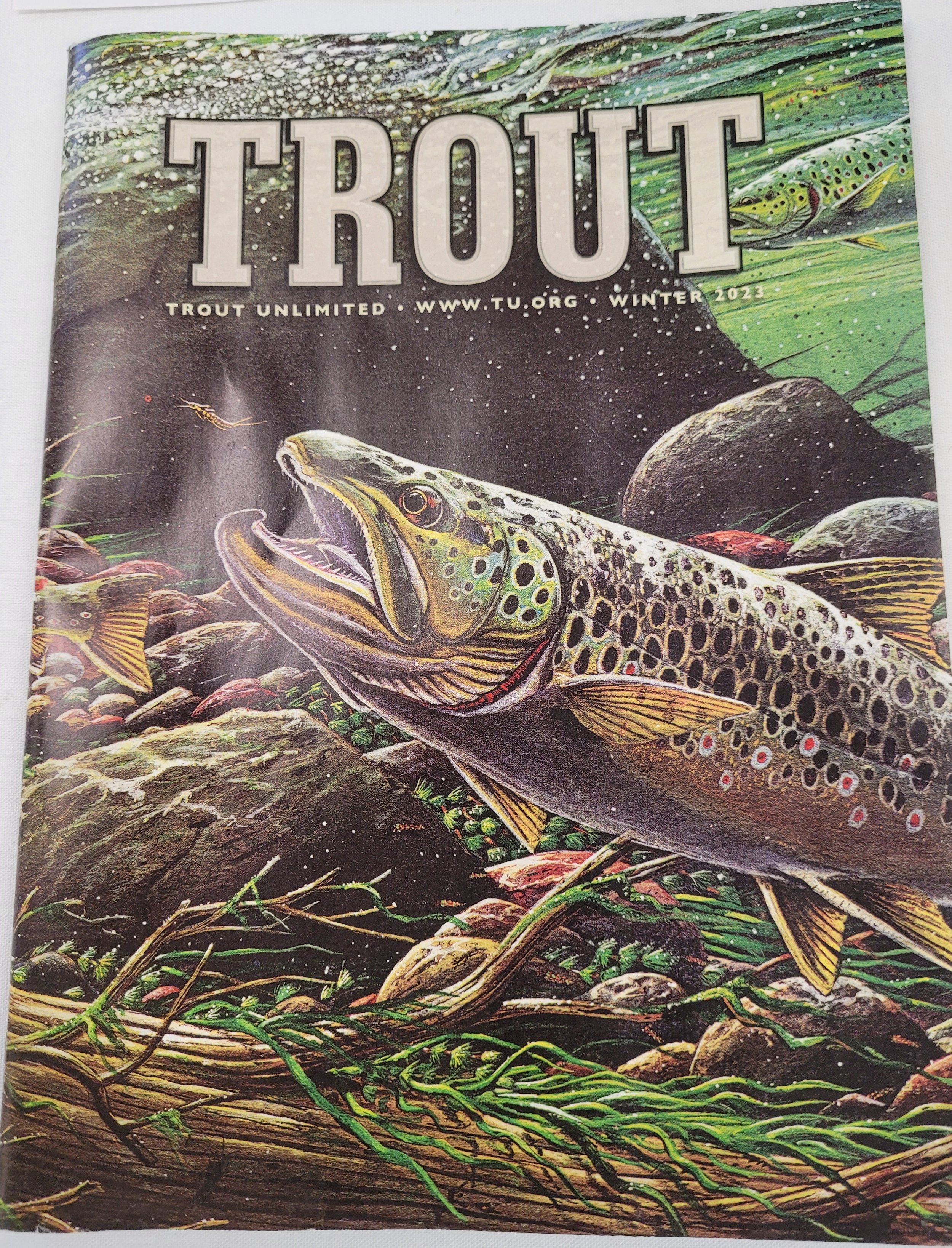What's Wrong With This Picture: Again...
“WHEN IT COMES TO FISH CONSERVATION, WE’VE NEVER REALLY GOTTEN IT RIGHT. THE EMPHASIS HAS BEEN TOO GAMEFISH CENTRIC, TOO ACCEPTING OF NONNATIVES, AND TOO RELIANT ON ARTIFICIAL PROPAGATION AND OTHER FORMS OF HUSBANDRY. NOWHERE IS THIS MORE EVIDENT THAN IN THE TROUT CONSERVATION ARENA...”
Bob Mallard - Executive Director, Native Fish Coalition
I just returned from a 4-day fly fishing festival held on the fabled Batten Kill in Vermont. While there I presented on New England’s rare native Arctic charr, formerly known as blueback and Sunapee trout. The speaker before me presented on endangered Atlantic salmon on behalf of ASF. The Vermont chapter of NFC tabled at the event with a native brook trout banner and native fish centric schwag. It was great to see support for wild native fish in an area best known for its nonnative fishery…
Saturday morning, I stopped by the local TU chapter table to introduce myself. On the table was a stack of the Winter 2023 edition of TROUT magazine, TU’s membership publication. On the cover was a painting of a nonnative brown trout, a species whose introduction and spread has stressed and even displaced wild native trout and char all across America
While I cannot tell you what the brown trout painting was in reference to, it’s appearance on the cover sans any explanation to the contrary looked like a promotion for the species.
When you consider all the discussions going on today in regard to wild native fish, including guest of honor Tom Rosenbauer’s podcasts featuring TU CEO Chris Wood and head of TU media Kirk Deeter, as well as yours truly, along with the recent PA wild native brook trout piece and supporting Editor’s Note in Fly Fisherman magazine, I was admittedly surprised, and disappointed, to see a brown trout on the cover.
There are approximately 35 species and subspecies of trout, char and salmon featured in Dr. Robert Behnke’s seminal book, Trout and Salmon of North America, that are native to the United States. Many other subspecies are noted, as are notable strains such as northern and southern brook trout, and unique life history strategies like New England’s landlocked salmon, and coaster and salter brook trout. This pushes the number up closer to 50.
Messaging is critically important when it comes to conservation. It is especially impactful when it comes from government agencies and organizations. While I fully understand that nonnative brown trout are popular with fly fishers, and here to stay, the continued promotion of them by agencies and organizations only serves to undermine the efforts of those trying to save what’s left of the nations wild native fish.
Brown trout are not in trouble in America. They do not need any more promotion than they are already getting from anglers, the fishing industry and sporting media. This is especially true with regard to TU, the largest, most visible and most influential fish conservation organization in the nation, as what they say and do influences the fishing and conservation masses.
Not promoting nonnative fish is not the same as opposing nonnative fish. And by not promoting nonnative fish, TU would strengthen their message as a trout conservation organization. How can we effectively decry nonnative lake trout in Yellowstone Lake but promote nonnative brown trout elsewhere? Or oppose nonnative bass in the Miramichi River?
“THE PROTECTION OF NATURALIZED NONNATIVE SPECIES SHOULD NOT BE CONFUSED WITH CONSERVATION. IF WE TRULY WANT HEALTHY, RESILIENT, FUNCTIONING AQUATIC ECOSYSTEMS, WE NEED TO PRIORITIZE THE PRESERVATION AND RESTORATION OF WILD NATIVE SPECIES AND PUT FISH AHEAD OF FISHING.”

